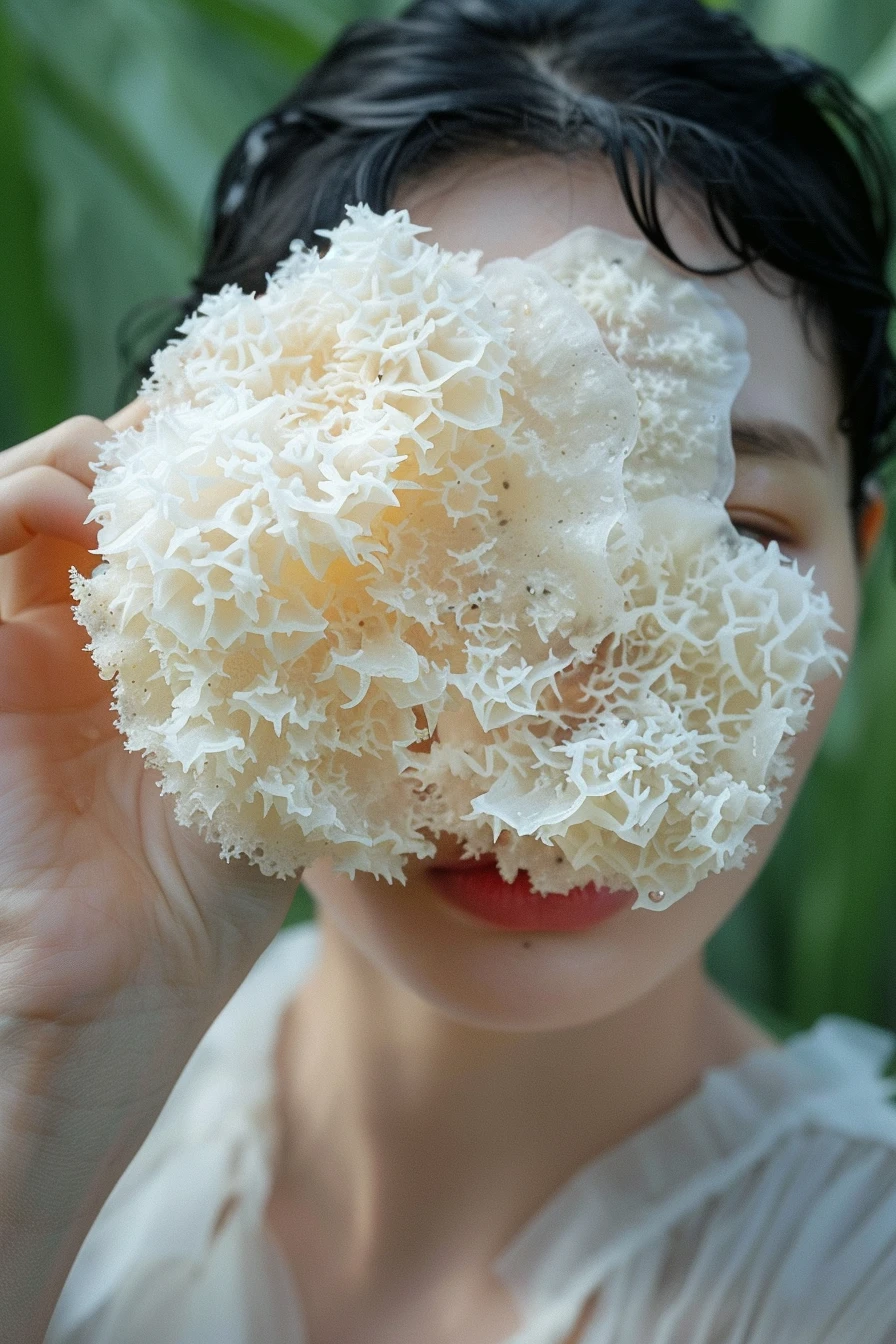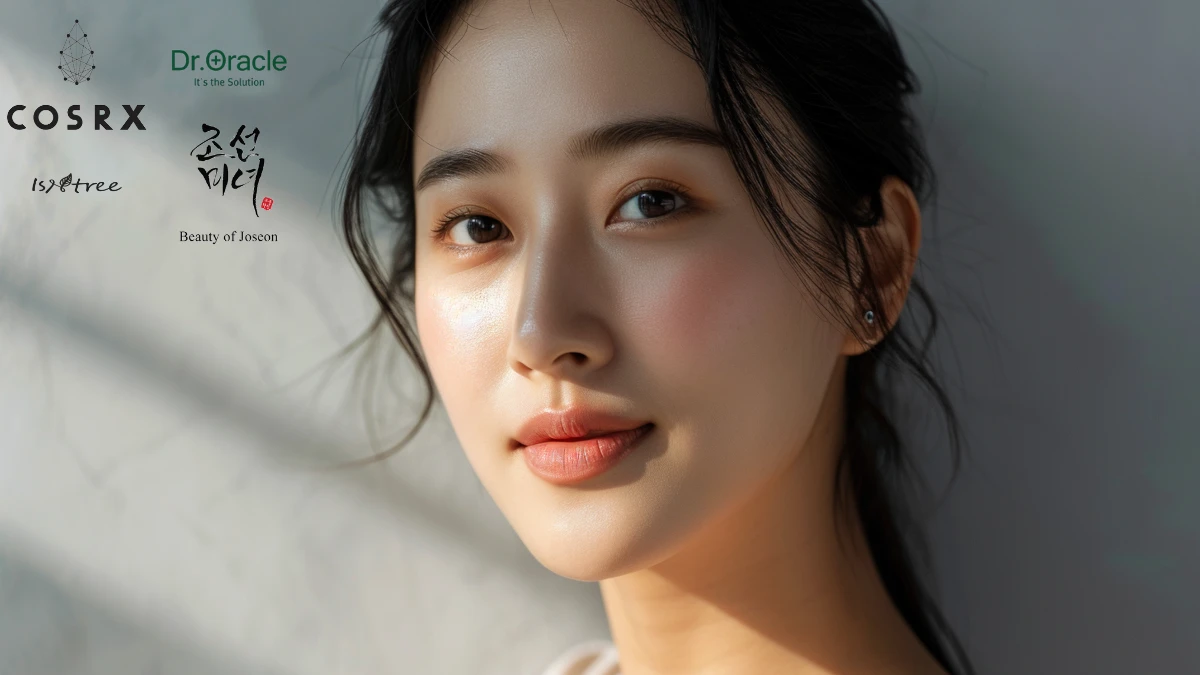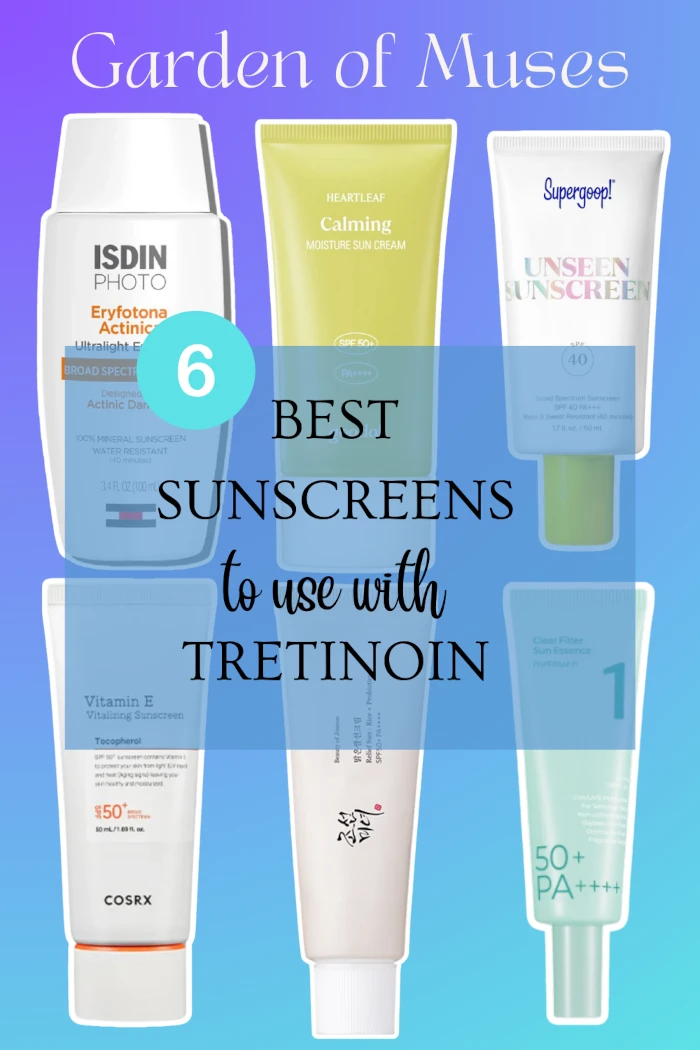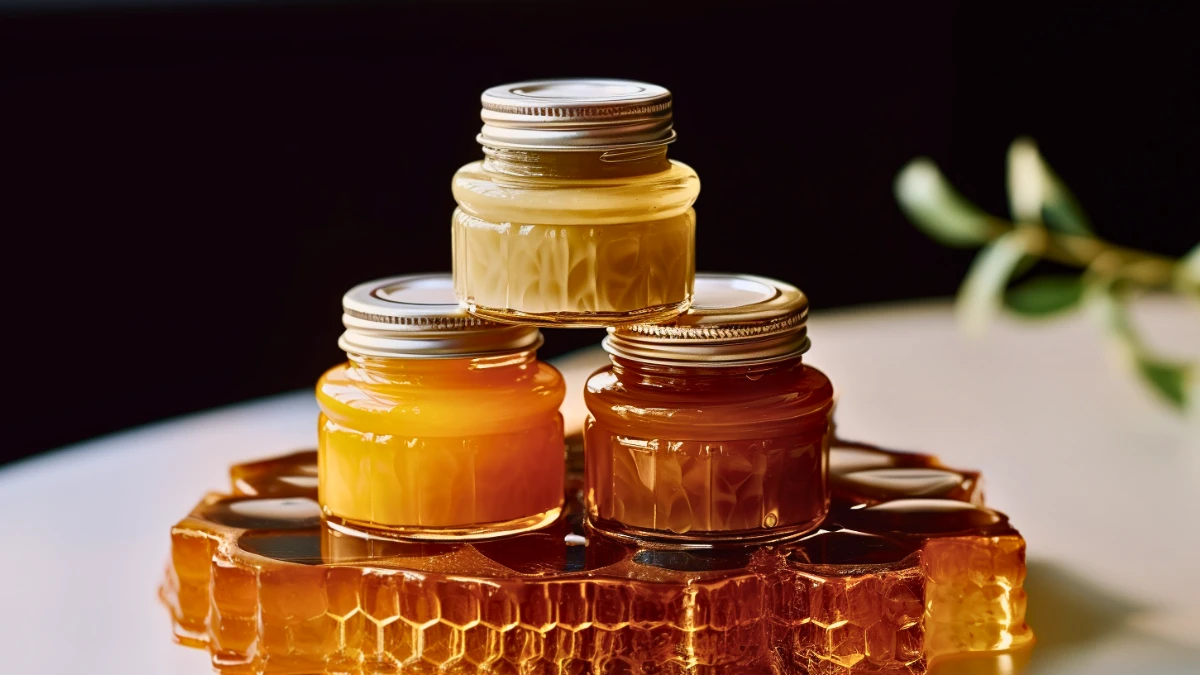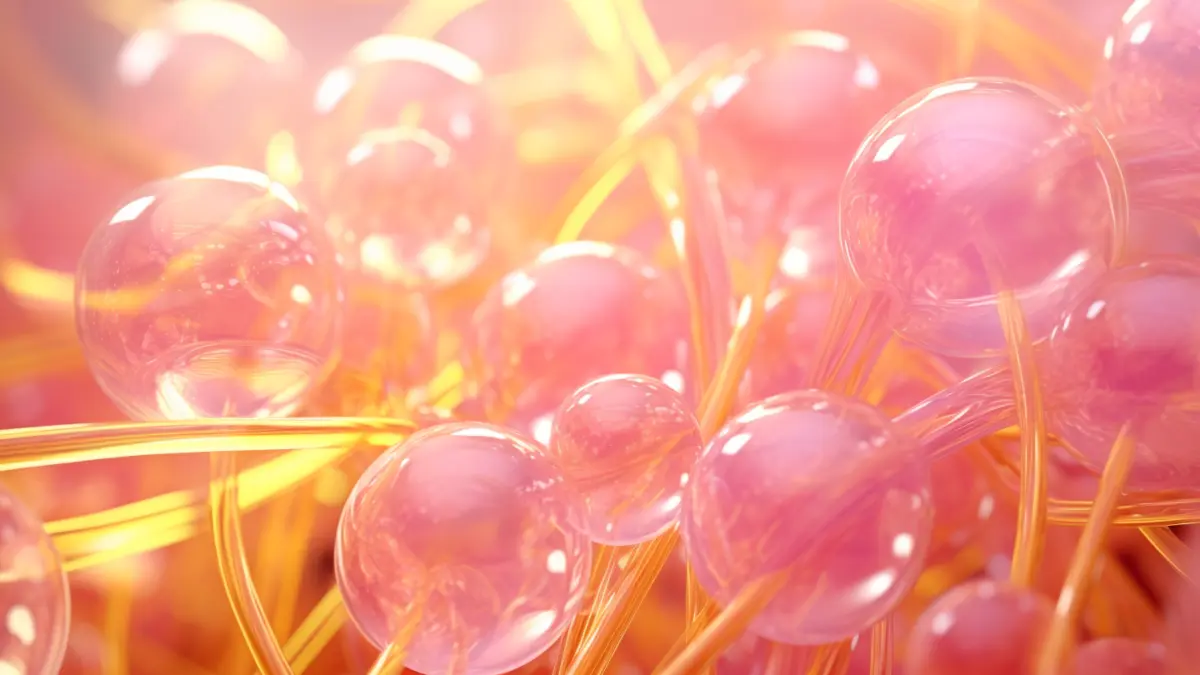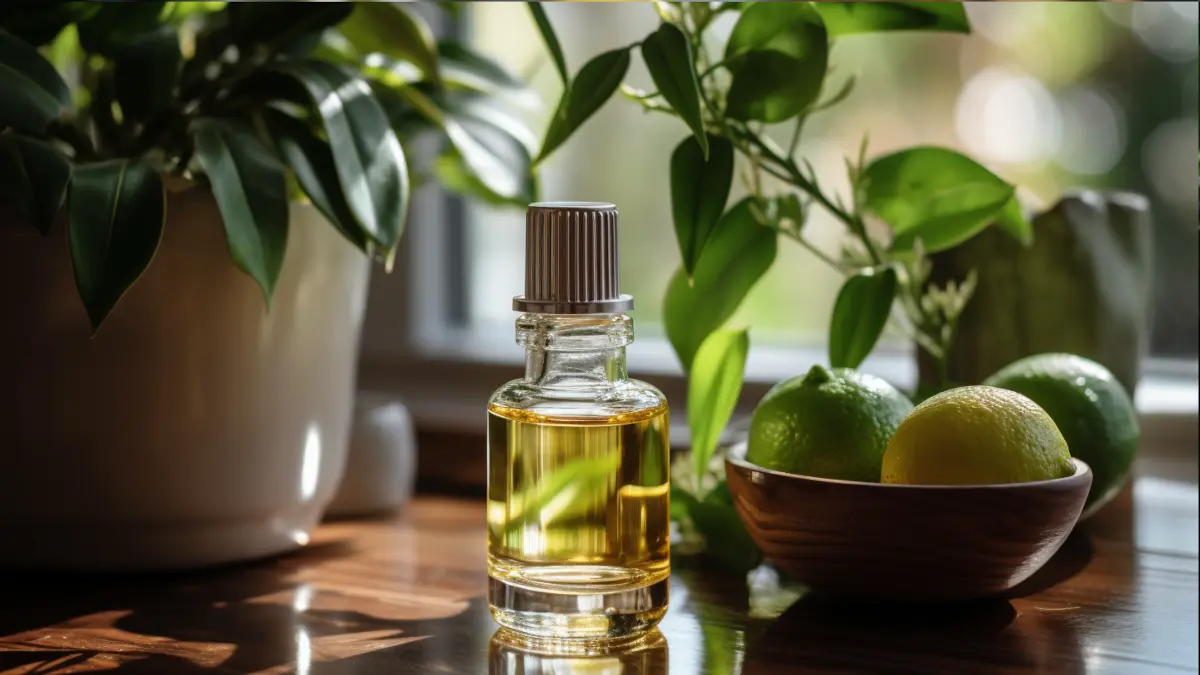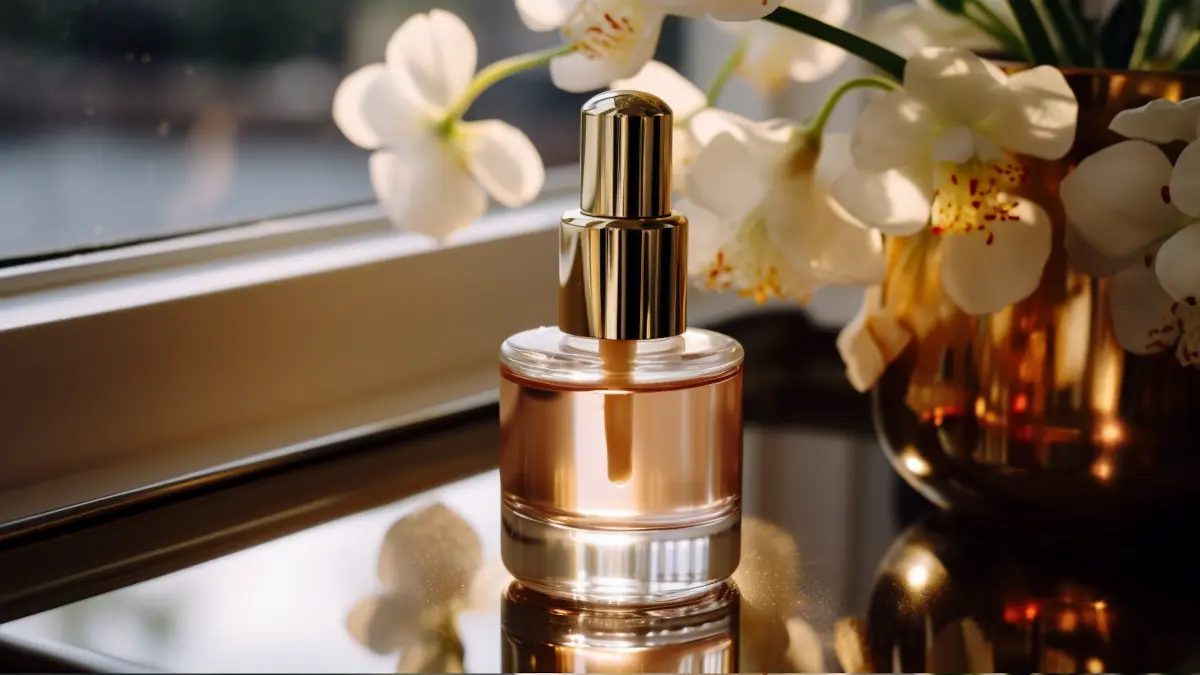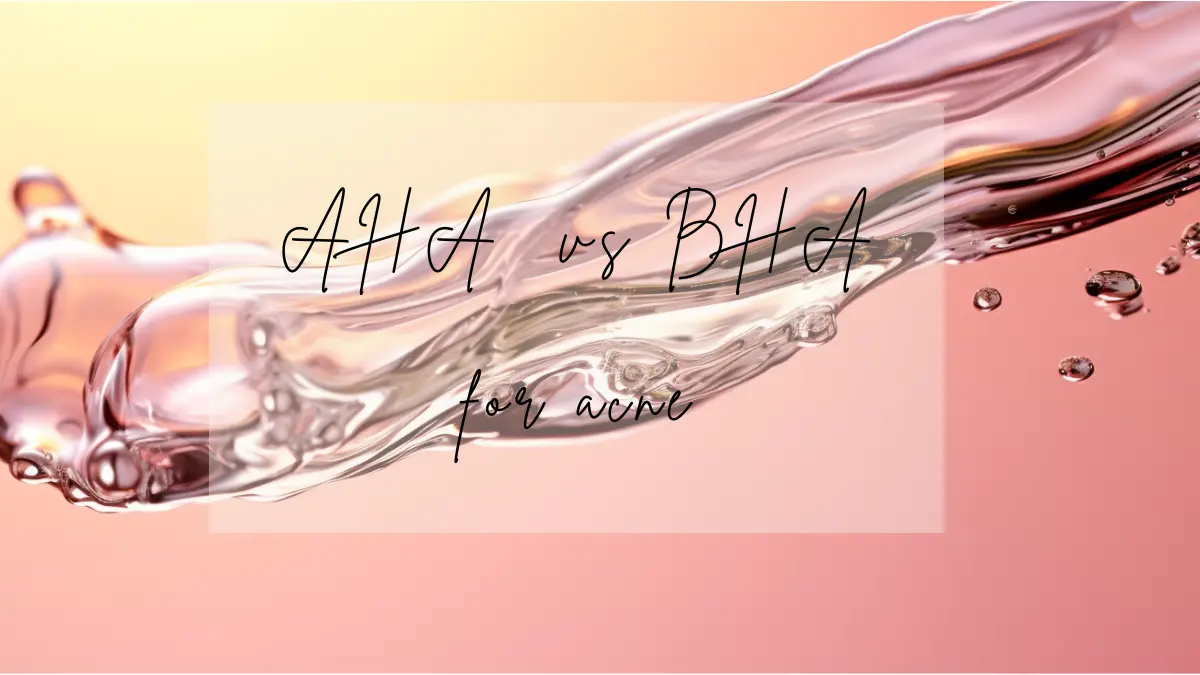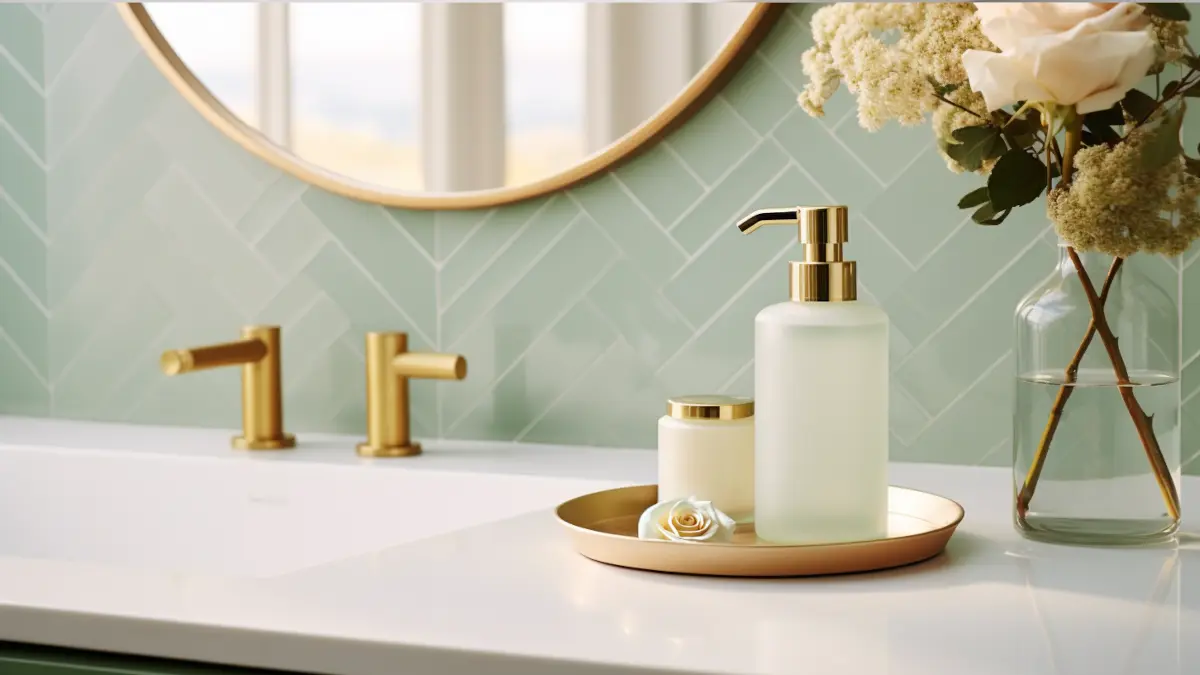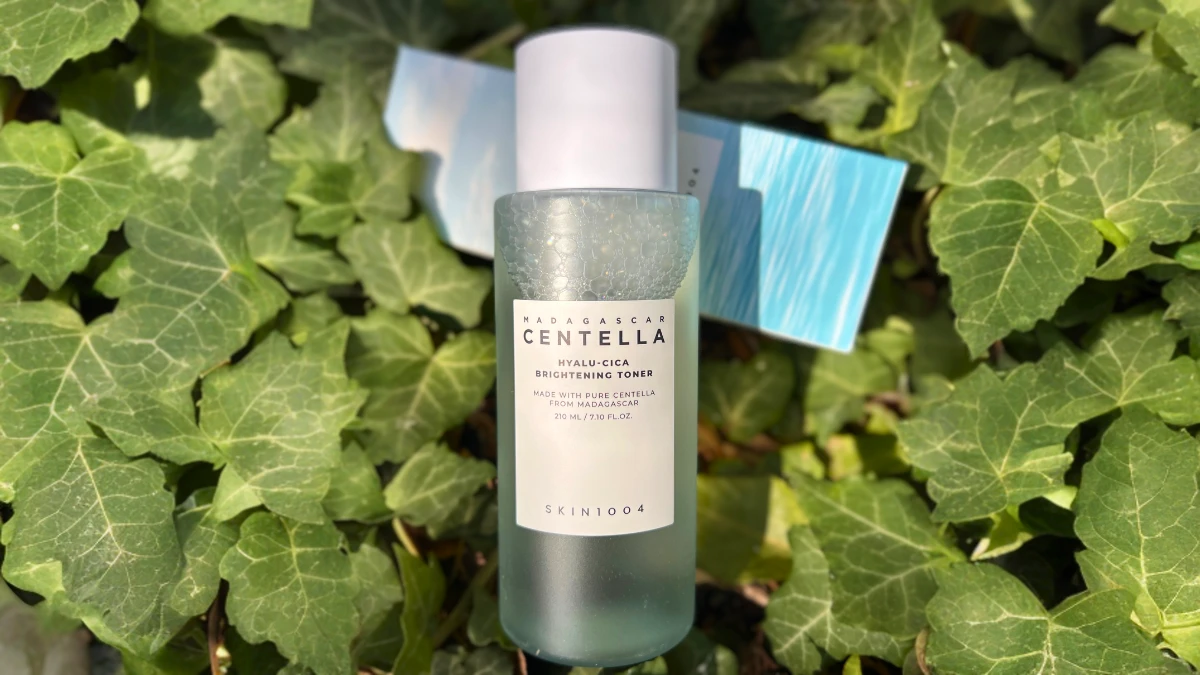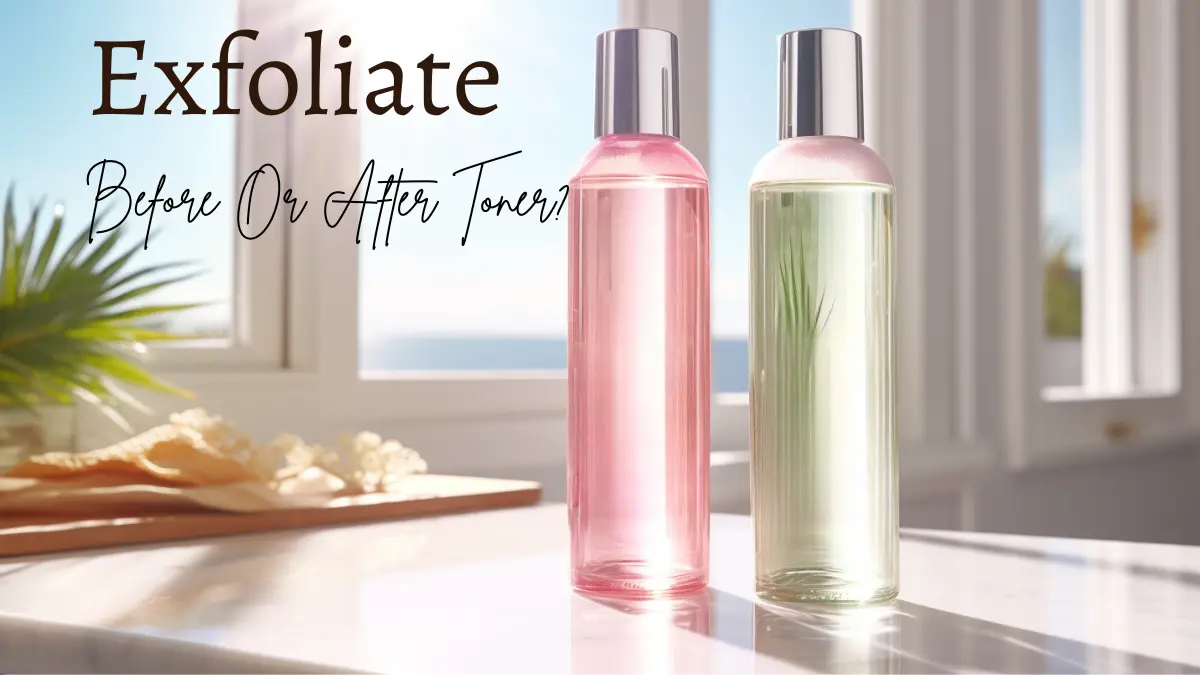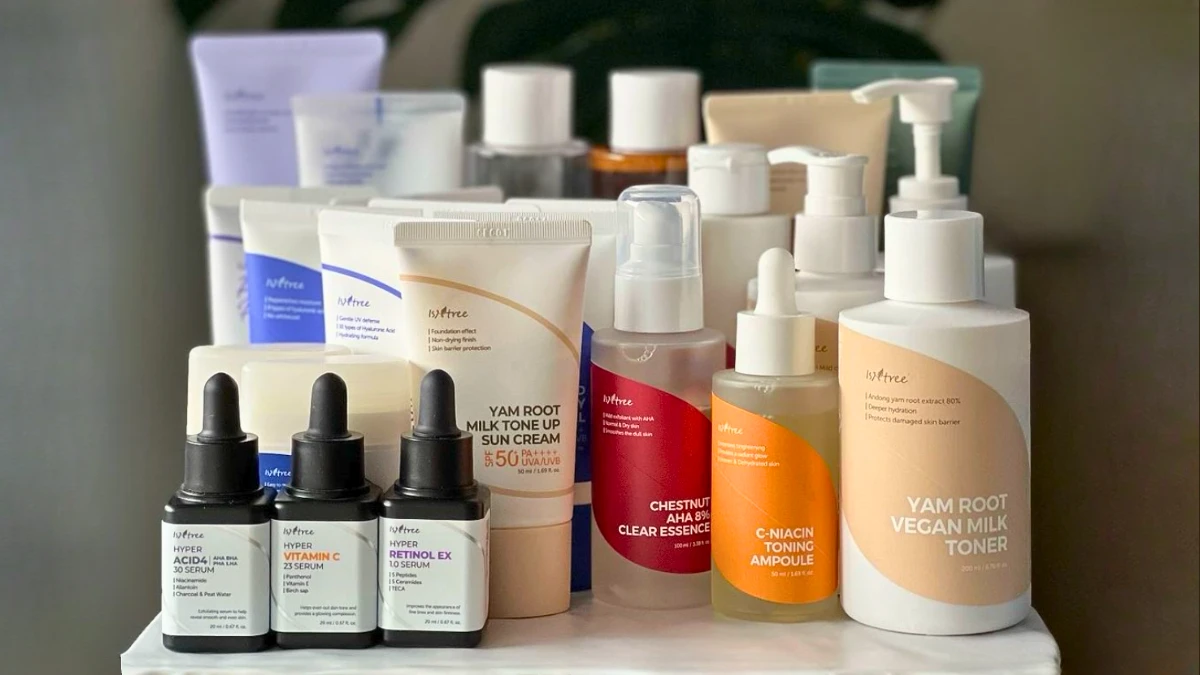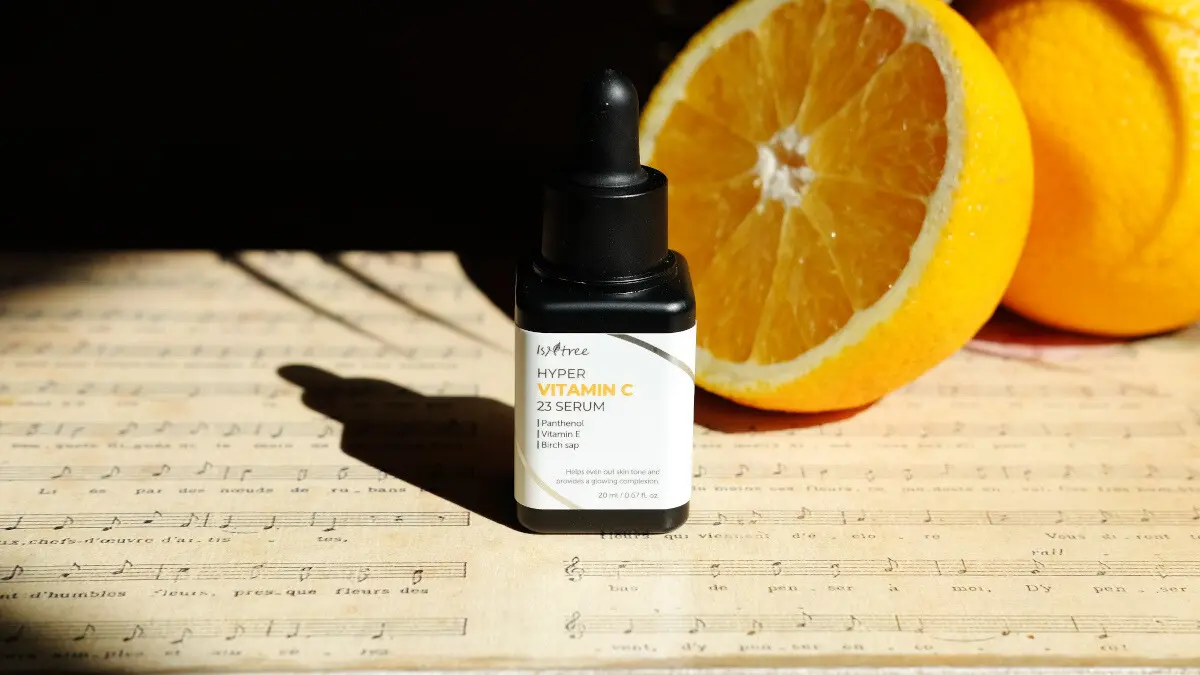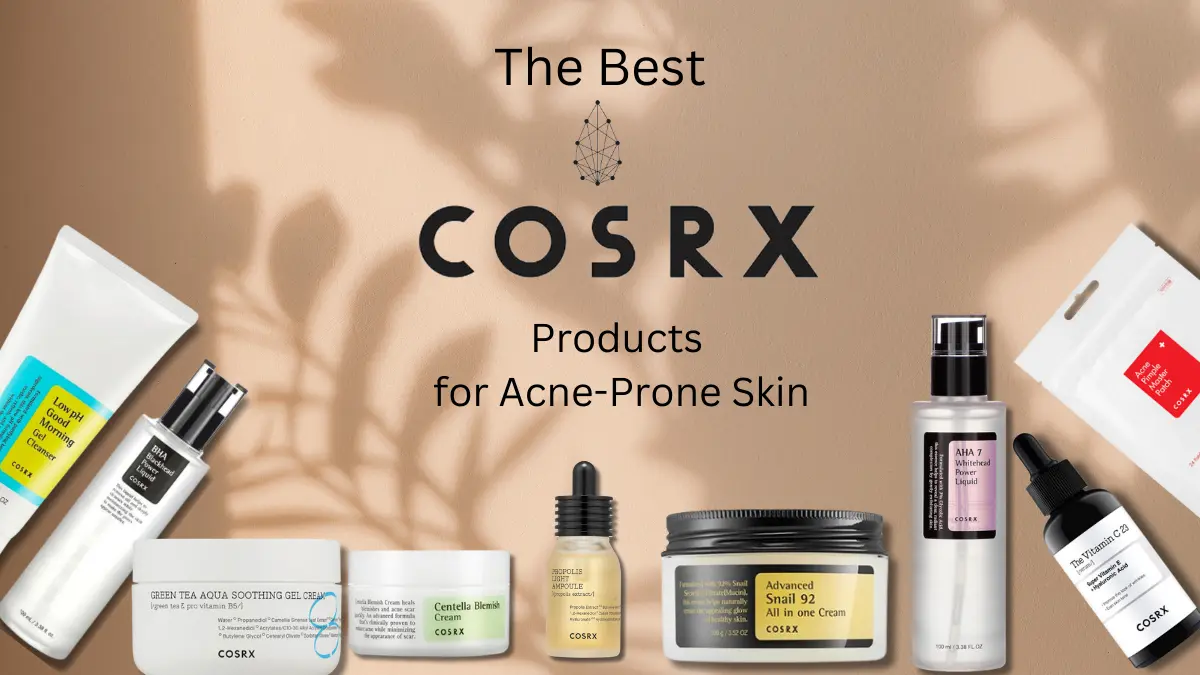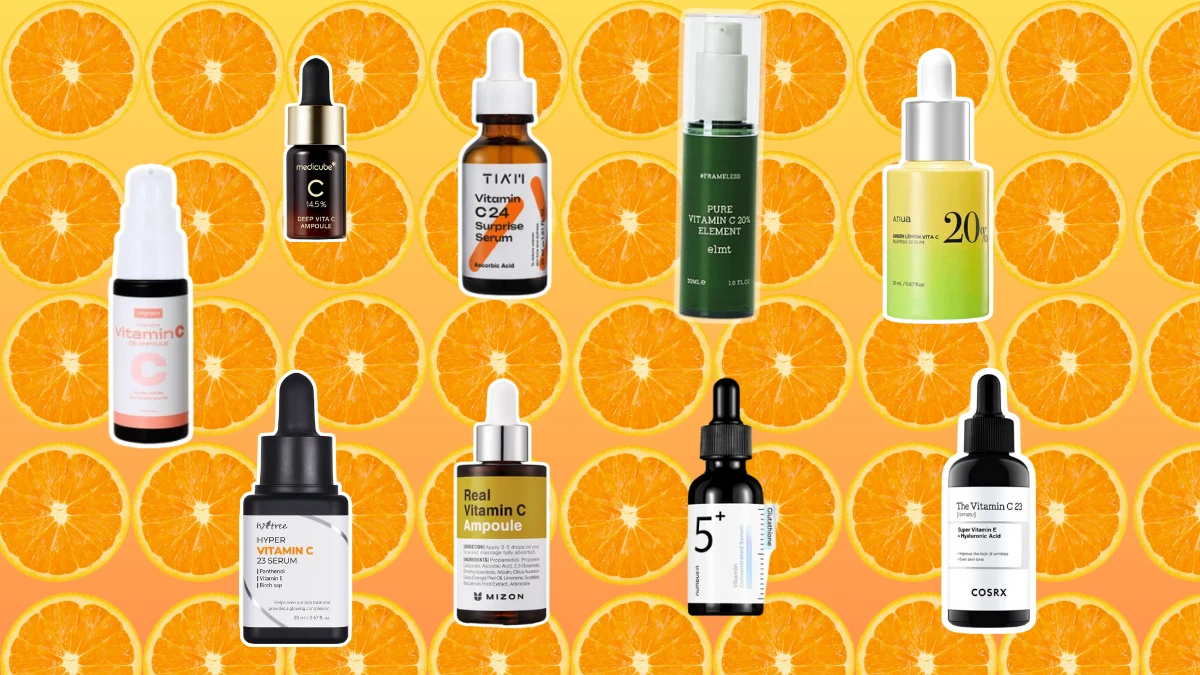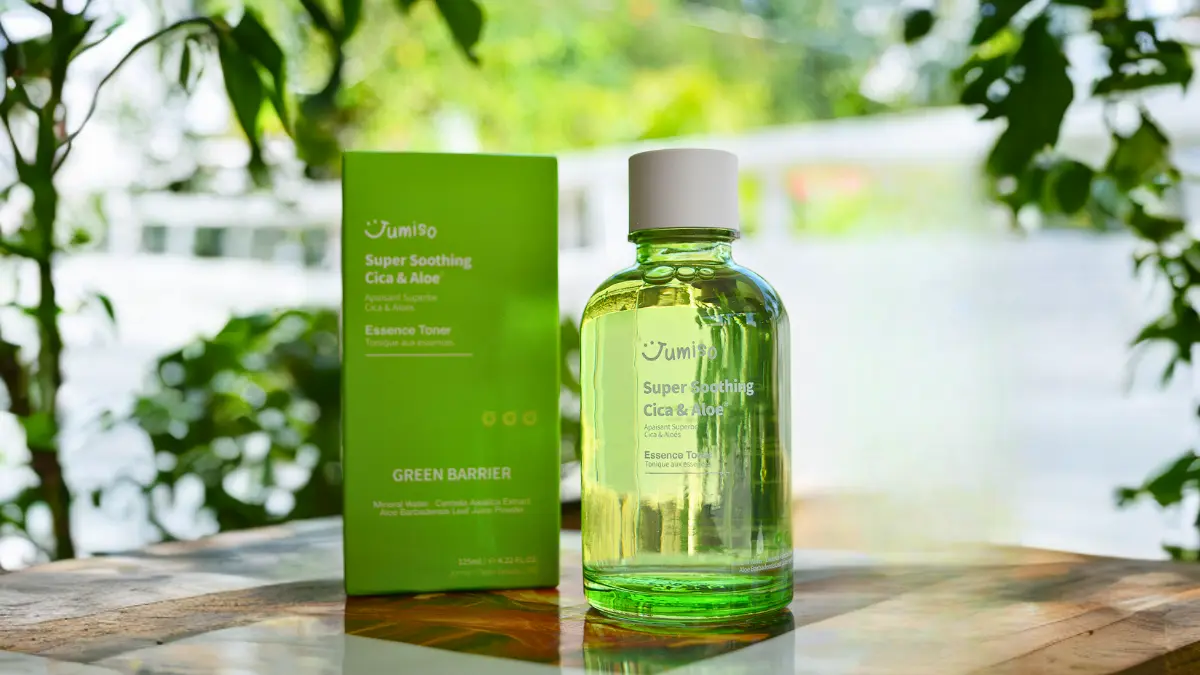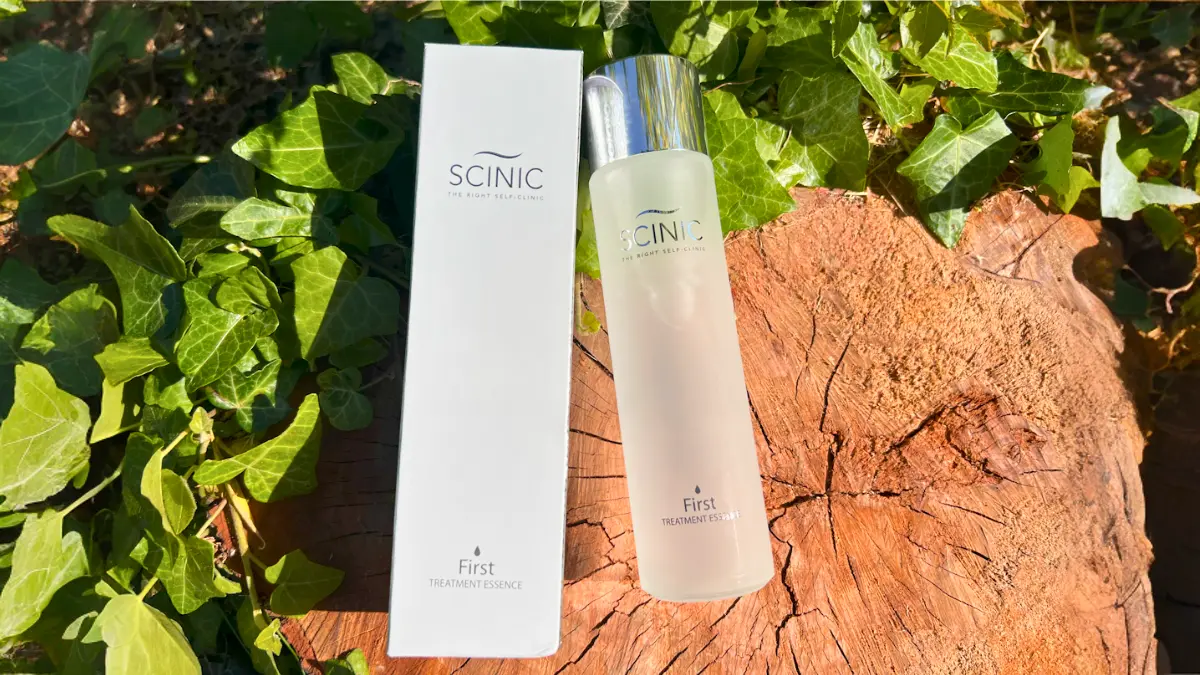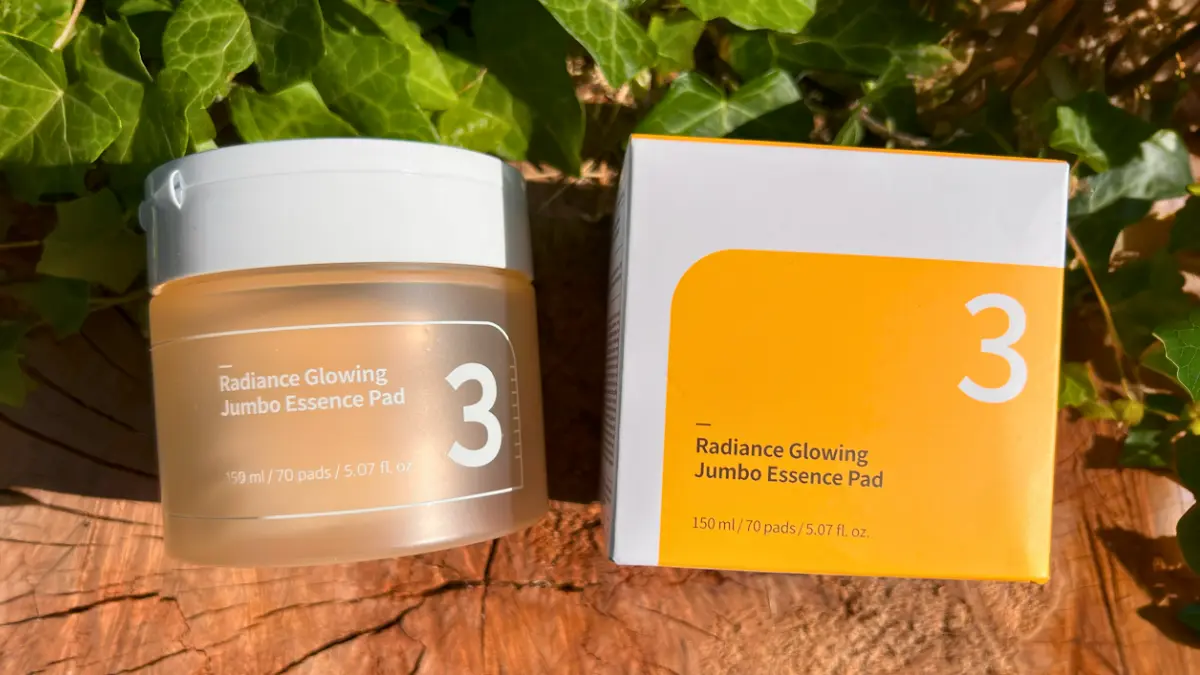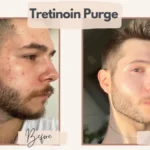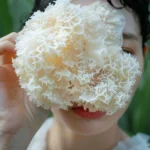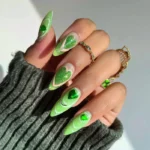The word acid gets a bad rap for apparent reasons. Pair it with skin, and it sounds like a terrifying combo.
It’s a match that makes for heavenly skin — but only if done right. Navigating the world of chemical exfoliators can be complicated, especially if you’ve never tried one. But they’re entirely worth the effort for every skin type and concern.
Alpha Hydroxy Acids (AHAs) are similar to beta hydroxy acid (BHA) and are much less abrasive than physical exfoliants (such as scrubs).
These leave-on products will gently help shed the build-up of dead skin cells, leaving your skin hydrated, smooth, and vibrant. In short, you’ll find that Korean skincare products containing AHAs are pretty gentle compared to Western products. For example, you won’t find any harsh Korean chemical peels. Once you incorporate acids into your routine, you’ll wish you’d put your fears aside much sooner.
Keep reading if you’d like to know about AHAs’ benefits for your skin. But if you’re in a hurry, the best Korean AHA products are:
The 5 Best Korean AHA Skincare Products:
What Are Alpha Hydroxy Acids (AHAs) and What Do They Do for the Skin?
Alpha-hydroxy acids, often abbreviated as AHAs, are a type of acid widely used in cosmetics. The most common cosmetic AHAs are glycolic acid, lactic acid, citric acid, and mandelic acid. They are used primarily as chemical exfoliators and secondarily as humectant moisturizers.
AHAs exfoliate the skin by promoting keratolysis. Keratolysis is the process of breaking down the “brick wall” of dead skin cells, called the stratum corneum, that make up the outer layer of the skin. This means a thinner layer of dead skin cells on the face, giving the skin a brighter, younger-looking appearance. The humectant quality comes from the hygroscopic properties of the AHAs, which attract water to the skin.
These qualities, exfoliation, and hydration in one ingredient make AHAs extraordinarily popular in commercial skincare. Since retinoids are available as pharmaceuticals, AHAs have emerged as the keratolysis alternative for over-the-counter cosmetic brands. Most cosmetic skin care products that advertise “skin renewal” or “night repair” refer to the inclusion of an AHA ingredient.
Glycolic Acid
The most common form of AHA used in skincare products (as well as the most researched form).
It is mainly derived from sugar cane, although it can be derived from other plants high in sugar. It also has the smallest molecular size, meaning it penetrates the skin better than other forms of AHA.
Lactic Acid
It is probably the second-most common form of AHA used in skincare products. It can be naturally derived from milk.
However, most lactic acid in skincare products is derived synthetically since the synthetic form is easier to stabilize and formulate.
Mandelic Acid
This form of AHA is also known as amygdalic acid. Mandelic acid isn’t quite as effective at exfoliating dead skin cells as glycolic or lactic acids since it has a much larger molecular size.
However, its larger size makes it less irritating and suitable even for sensitive skin.
If you want to learn more about the benefits of mandelic acid for the skin, here is Alyssa‘s Guide:
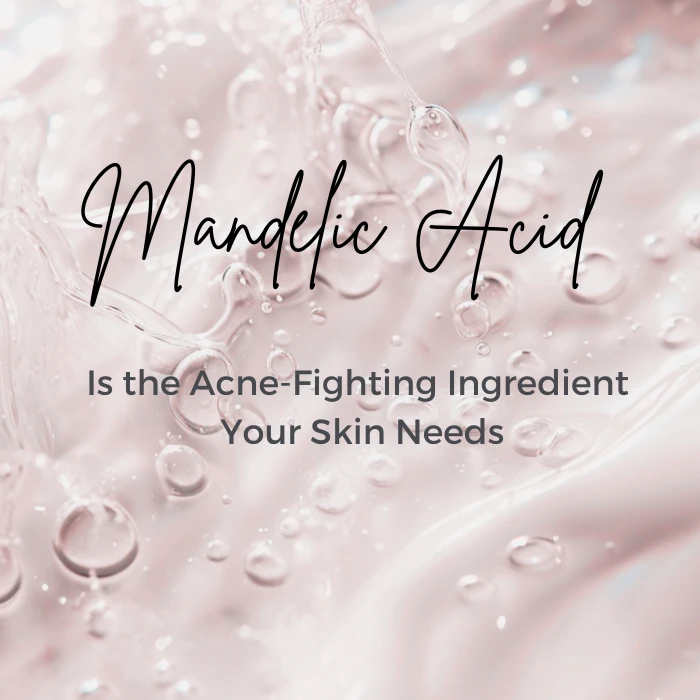
Malic acid
A form of AHA derived from unripened fruit. It’s used in skincare and cosmetics to adjust a product’s pH.
Our bodies also produce malic acid naturally when converting carbohydrates into energy. However, there isn’t enough research to confirm whether malic acid is as effective as glycolic acid in skin exfoliation.
In the Journal of Dermatology1, a published study found that combining malic acid and glycolic acid increased cell proliferation and functional activation of fibroblasts, indicating that the ingredient effectively stimulates collagen production.
Although it has been reported in the International Journal of Skin Science2 that malic acid is somewhat less effective than the alpha hydroxy acids glycolic acid and lactic acid, in combination with other AHAs, malic acid has been reported to have significant efficacy in treating skin roughness, fine lines, and hyperpigmentation.
Unlike the other AHAs, malic acid has also been demonstrated to have some anti-microbial activity, as reported in The American Journal of Enology and Viticulture3.
Tartaric Acid
This alpha hydroxy acid is found in many fruits, most notably grapes, although it is also found in bananas, tamarinds, and citrus.
Its benefits to the skin are not well researched, although it is known to have antioxidant properties.
Citric Acid
Citric acid is a form of AHA which, as you might have guessed, comes from citrus fruits. It’s used in small amounts in skincare products to adjust the pH to prevent them from being too alkaline.
Research has shown that citric acid is an effective chemical exfoliant and can increase collagen production. However, skincare products contain nowhere near the concentration required for this AHA to be effective.
As you can see, the stand-out AHA is currently glycolic acid. However, science may soon shed more light on the benefits of other AHAs.
Glycolic Acid Benefits
Almost anyone can benefit from adding AHAs to their beauty routine! This is especially true for people with dry or sun-damaged skin because they can help to add hydration to your skin.
Funny, I know. Acids are usually associated with drying out your skin. Misconceptions!
Exfoliation
These acids are keratolytics, meaning they disrupt the connections between superficial skin cells to exfoliate the skin surface
Dr. Jessica Weiser of the NYDG Integral Health & Wellness
Sloughing off that dead skin will help clear up any dark spots, even out the texture of your skin, and boost cell turnover so that those pesky problems go away faster.
This makes glycolic acid an excellent ingredient for fading hyperpigmentation.
Reduces the appearance of fine lines and wrinkles
Furthermore, AHAs have been shown to help stimulate collagen production — and we know that as we age, the collagen that our skin makes sadly slows and decreases.
When it’s ramped up and boosted, skin looks plumper and tighter, and wrinkles are less visible.
Glycolic acid increases collagen production and collagen thickness in the skin’s dermis. That’s why it’s frequently found in anti-aging treatments.
Improves photo-aging
AHAs shine when you need help improving photo-aging and brightening a dull complexion.
Hydrates
Glycolic acid increases the hyaluronic acid content in the dermis and epidermis, helping boost skin hydration levels.
Treats Acne
Glycolic acid helps treat acne, especially whiteheads and inflamed lesions. Glycolic acid has also been found to be an effective ingredient for fading acne scarring, both PIH and atrophic scarring.
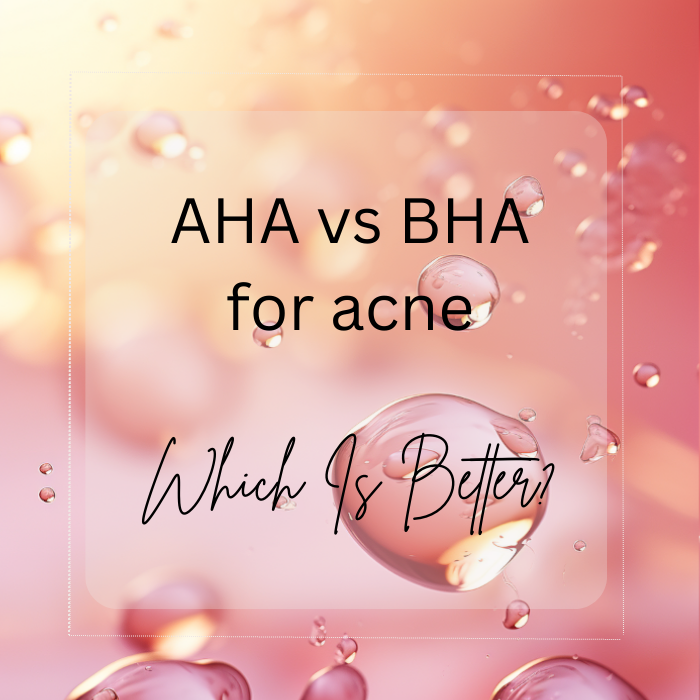
What to Look For in an AHA Serum
Like with other beauty products, what you need might be different than what I need, so I can’t give you a stone tablet with precise instructions for choosing a serum. Would that I could.
Instead, I’ll give you the most vital information to look for when you’re shopping so that you can feel confident in what you pick!
Concentration
Most AHA products range from 4 to 15 percent. A few hardcore peels are 30 percent or more potent, but do not buy those until you are a grizzled skin care veteran with an excellent sense of what your skin can and can’t handle. Otherwise, there will be regret. Trust me.
I’ve found that 5 percent is a lovely, gentle amount for daily maintenance. If your skin is sensitive, I recommend starting here.
Generally, 7% percent is where I like to stay for regular exfoliation. If you have normal or oily skin, you can start here. If you’re worried about overdoing it, start low and work your way up! This is a marathon, not a sprint.
Anything above 10 percent tends to be too irritating for daily use. I usually reserve these for one to two weekly applications or when my skin is just having a fit, and I want to calm it down.
pH
You must probably know certain skin care items’ pH matters, especially in AHAs. For them to effectively exfoliate, you should get one with a pH of less than 4. All of the products I’ve listed below meet that threshold!
Molecule Size
This can get complicated fast, so let me skip the long-winded explanation and give you the significant bit.
Each type of AHA exists as a differently-sized molecule. It works like this for our purposes: The smaller the molecule is, the stronger it is. This means it has more exfoliation potential but also more irritation potential.
Glycolic acid molecules are smaller and more potent, but there’s more potential to irritate your skin.
Lactic acid is a middle-sized Goldilocks molecule that balances exfoliation and irritation potential well.
Mandelic acid is a much larger molecule, so it’s also much gentler, but you’ll find it works more slowly, which is fine! Marathon, remember?
How Does AHA Differ from BHA?
You may have heard about beta hydroxy acid (BHA) and salicylic acid. This popular skincare ingredient is also a chemical exfoliant, with the main point of difference being that BHA is oil-soluble (remember that AHA is water-soluble).
This main difference means that while AHA unglues the bonds between dead skin cells, BHA can penetrate the pores to clear out the gunk that collects there.
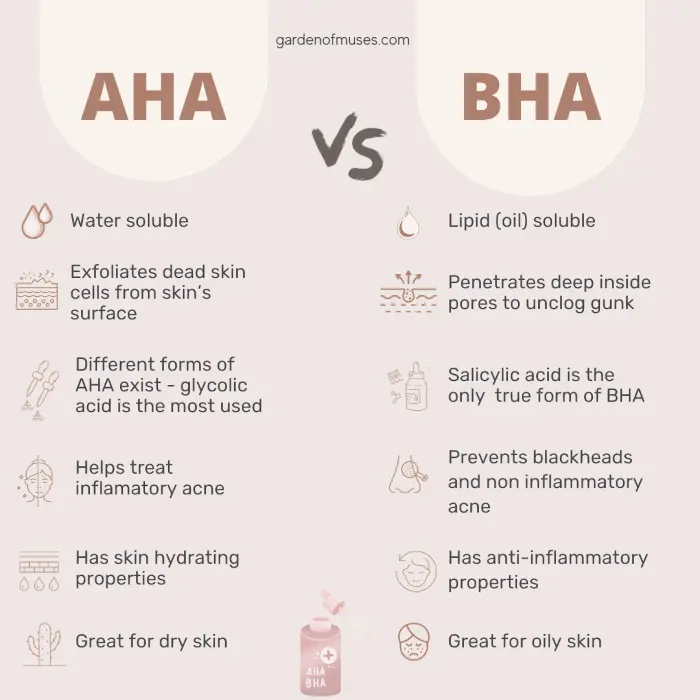
How to Use AHA
Using an AHA or BHA in your skincare routine is simple. It’s also not as scary as it sounds. We associate burning and other nasty skin effects with the word acid.
Remember that chemical exfoliants are much gentler on your skin than physical exfoliants, which create micro-tears in your skin.
Can You Use AHA Everyday?
How often you decide to use AHA to exfoliate your skin depends on how well your skin tolerates skincare acids and the concentration of AHA in the product you’re using.
You could use it daily if your skin tolerates AHA well without burning, itching, or flaking.
Some people even use AHA twice daily. However, I don’t think it’s necessary to use AHA this often, and your skin will see some great benefits if you use it every second day or even twice a week.
The best way to find out how often you need to use AHA is to start using it once a week and slowly increase the frequency of use (if your skin tolerates the product well).
When In Your Skincare Routine Should You Apply AHA?
Chemical exfoliants, whether an AHA or BHA product, should be applied after the cleansing steps of your skincare routine.
You should also apply any pH-adjusting toners before proceeding to exfoliate your skin. However, hydrating toners should be used after exfoliating your skin.
If you’re using other actives in your routine (such as vitamin C, retinoids, or BHA), the consensus is to apply them from lowest to highest pH (with a 20-30 minute absorption period between each one). For example, if your skincare routine consists of vitamin C (in the form of L-ascorbic acid), AHA, and BHA, you should apply the vitamin C serum first, followed by the BHA and then AHA.
Of course, using three actives like this in one routine may be too harsh for your skin. I like to apply my vitamin C serum in the morning (daily) and either AHA or BHA in the evening.
Learn why it is preferable to use a chemical exfoliant directly after cleansing and before using your toner:
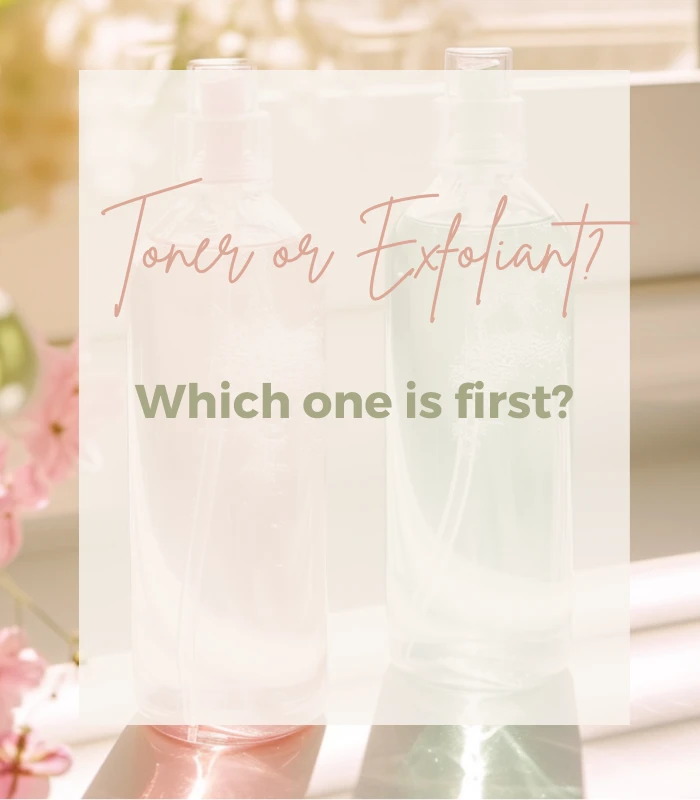
Why You Absolutely Shouldn’t Forget SPF If Exfoliating with AHA
AHA (especially glycolic acid) is a tiny molecule that does a fantastic job getting in between the layers of skin cells – exfoliating away the dead ones. However, this process can temporarily thin the top layer of your skin, meaning it’s essential to protect your skin from sun damage by using SPF daily.
Also, exfoliation with AHA helps to fade hyperpigmentation by revealing new skin that hasn’t been pigmented with melanin.
Not wearing SPF will waste all your hard work to fade hyperpigmentation (PIH, sunspots, or melasma). Trust me when I say two days in the sun without SPF is enough to make the melasma on your forehead magically re-appear.
The Best Korean AHA Products
AHA is a very beneficial skincare ingredient, and incorporating it into your skincare routine can result in massive improvements to your skin. But what are the best Korean skincare products with AHA? Which one should you try?
Like all my other articles, I’ve spent many months finding the answer by testing many products. Below are what I’ve chosen to be the four best Korean AHA skincare products:
1. COSRX AHA 7 Whitehead Power Liquid

This is probably the #1 cult favorite in the K-beauty world. It’s the “comfy sweatpants” of the AHA serums. It’s a 7% glycolic acid serum that’s reliably effective and easy to apply thanks to its slippery gel texture. It comes in a convenient pump bottle, and it lasts forever.
I love the simplicity of COSRX product formulations, and the AHA 7 Whitehead Power Liquid is no exception. Just look at that short ingredients list! It is an affordable alternative to Paula’s Choice 8% AHA Gel*.
I also like that this product uses apple water (which contains natural AHAs) instead of just water as its main ingredient. It also contains niacinamide, which has many benefits, including fading hyperpigmentation, strengthening the skin’s barrier, reducing fine lines and wrinkles, and controlling sebum production.
This product contains butylene glycol, which tends to get a lot of bad rap. If you want, you can learn more about butylene glycol in this article. If you don’t have time:
- It’s almost impossible to avoid this skin care ingredient if you want to use Korean skincare products, as it’s probably the most commonly used ingredient;
- Lots of research conducted over many years has led to the understanding and approval that butylene glycol is a safe ingredient when used in skincare and cosmetic products.
The pH of the COSRX AHA 7 Whitehead Power Liquid is around 4, which is near the upper end of the effectiveness range of glycolic acid. This means that the AHA in this product is still effective while being gentle on the skin.
Let’s talk about the smell first because you’ll notice it, and you might think there’s something wrong with the product you received. But there’s nothing wrong with it. It just smells, um…bad. The smell resembles burnt rubber and doesn’t disappear after a few minutes. This is because some skincare ingredients naturally have unpleasant odors, often covered using essential oils or fragrances.
The off-putting smell is the trade-off to the benefits of the minimal ingredients list of this product, meaning your skin will be less prone to breaking out or becoming irritated (and who doesn’t love that?).
I’d describe the texture of this AHA liquid as slightly thicker than water. It slides easily onto the skin, isn’t sticky, and is absorbed quickly. I love it, and so does my skin and I think it’s the best Korean AHA.
Pros:
- effective
- affordable
- alcohol-free
- essential oil-free
- fragrance-free
Cons:
- bad smell
Price: $12-$18
2. Isntree Clear Skin 8% AHA Essence
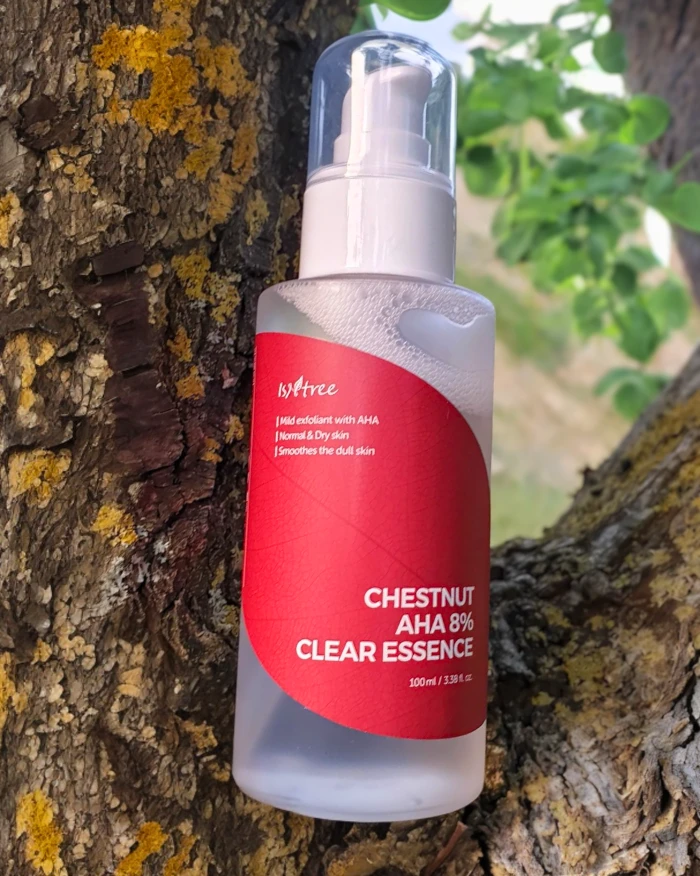
Isntree is an affordable, cruelty-free Korean skincare brand with natural and safe ingredients. However, it’s been around for a while. It was established in 2009, and many of its products are best-sellers in Korea (such as their Hyaluronic Acid Toner*).
Although this ingredient list is slightly longer than the COSRX one above, most plant extracts are gentle and beneficial for the skin. It doesn’t contain much else!
Unlike the COSRX AHA 7 Whitehead Power Liquid*, which contains 7% glycolic acid, this essence contains 4% glycolic acid and 4% lactic acid. This means that it has 8% AHA overall. However, the formulation is gentler than the COSRX one, as lactic acid is gentler on the skin due to its slightly larger molecular size and more hydrating than glycolic acid.
I also like that this essence contains Asiaticoside, a compound derived from Centella Asiatica and mulberry bark extract, which both have soothing effects on the skin, as well as sodium hyaluronate and panthenol which both have skin-hydrating properties.
The brand states the pH of this AHA essence is 3.5 to 4, which falls within the range of effectiveness for glycolic and lactic acid.
For those that don’t like the smell of the COSRX AHA 7 Whitehead Power Liquid, I’ve got good news for you because this AHA essence has no scent.
This essence is a clear liquid, too. However, it’s thicker than the COSRX one and feels more like a serum. It’s not sticky or oily and absorbs into the skin fast.
Pros:
- Contains Centella Asiatica and its main constituents
- alcohol-free
- essential oil-free
- fragrance-free
Cons:
- None so far
Price: $13-$15
3. By Wishtrend Mandelic Acid 5% Skin Prep Water
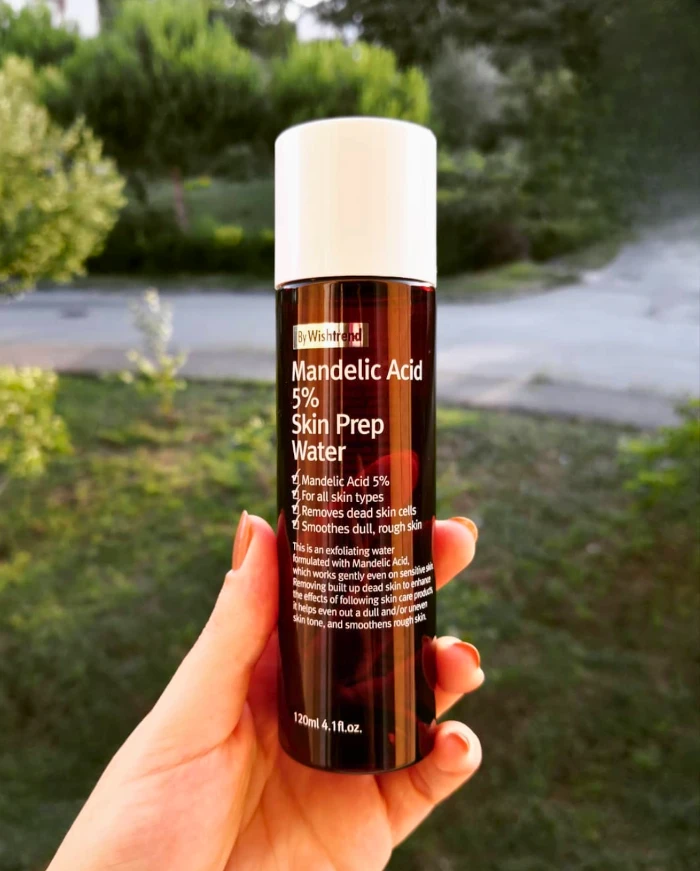
Mandelic acid is a fantastic ingredient for fading hyperpigmentation, and it has anti-inflammatory and antibacterial properties, which make it effective at treating acne.
This exfoliating liquid contains 5% mandelic acid. It’s an excellent option for people who want to include an AHA in their skincare routine but have sensitive skin or would like to avoid harsh AHA products in the summer months due to increased photosensitivity associated with AHAs.
I like that this product has some significant skin-soothing ingredients, including beta-glucan, extracted from oats with potent antioxidant properties. It has Centella Asiatica extract, which also has acne-fighting properties, and licorice root extract, which has anti-inflammatory and antioxidant properties, controls sebum production, helps prevent acne, and fades hyperpigmentation.
This product also provides hydration to the skin as it contains both panthenol (vitamin B5) and sodium hyaluronate.
When I tried this, I didn’t expect much in terms of visible results because it’s a low percentage and an exceptionally gentle AHA. I was pleasantly wrong, though! I love the soft, hydrated skin that comes with regular use of this toner.
By Wishtrend states on its website that the pH of their Mandelic Acid 5% Skin Prep Water is 4.5 ± 1.0.
As the name of this exfoliator suggests, the texture is quite watery, although a little more dense. So you’ll need to apply with a cotton pad, but other than that, there are no downsides!
The bottle is huge and very affordable, so this is an excellent choice for scalp or body acid application.
It has a slight natural fragrance due to its almond-derived ingredients, but it’s faint and dissipates quickly.
It’s a perfect option for beginners or people with sensitive skin.
Pros:
- 5% AHA – great for beginners
- It doesn’t sting, even on sensitive skin
- Gentle
- It helps to even out/smooth skin over long periods of usage
Cons:
- It may be too gentle for those who have mature/aging skin (since it’s only 5% AHA)
Price: $15-$22
4. numbuzin No.4 Ceramide AHA Glazed Skin Prep Serum

This serum is a HG for many people who have tried it. A serum formulated with 3% AHA (glycolic acid) and 3% PHA – ingredients that works to exfoliate dead skin cells gently and helps with hyperpigmentation. This formulation can help make your complexion look smoother, clearer, and even-toned.
It contains many other beneficial ingredients, but the main focus is on 5 ceramides which will protect your skin barrier making this serum safe for daily exfoliation.
- Glycerin, panthenol, gluconolactone, betaine, urea, Sodium Hyaluronate which help keep the skin hydrated
- Sphingomonas Ferment Extract extract which help protect skin barrier
This serum is a clear and viscous liquid with a slippery consistency. Although it does feel a little sticky to begin with, this feeling disappears quickly as it’s absorbed into the skin.
It is good for everyday use, feels super light and gentle. It gives you a smooth silky feel to your skin after a short time of use. It hydrates the skin leaving it brighter and looking dewy.
Bonus! Bottle opacity is technically a good thing because it helps to keep the acid from breaking down due to light exposure.
Ideal for all skin types including dry and sensitive skin.
Pros:
- Gentle exfoliation
- Hydrating
Price: $20-$26
5. medicube – Zero Pore Pad 2.0
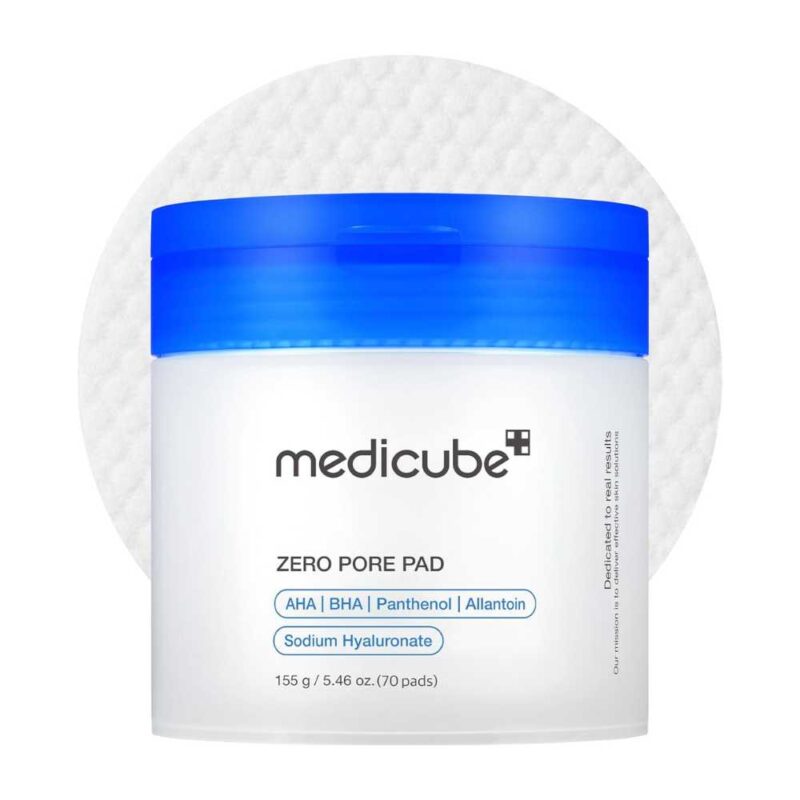
The Medicube Zero Pore Pads are infused with AHA and BHA, which helps remove dead skin cells, reduce blackheads, and refine pores without irritation. The pads are leave skin soft, glowy, and refreshed. Suitable for combination, sensitive, or textured skin, they help smooth bumps and balance oil while keeping the skin hydrated.
Medicube – Zero Pore Pad 2.0 features dual-sided toner pads in a almost scentless liquid. It’s clear and closely resembles water. The toner pads are embossed for gentle exfoliation and one smooth for soothing care. The pads are slightly smaller than typical cotton rounds but packed with essence
Comes with 70 pads and a tweezer for easy, hygienic use — a premium yet gentle way to achieve clearer, more even skin.
This is the number one best selling skincare product on Amazon!
Pros:
- AHA, BHA
- It doesn’t sting, even on sensitive skin
Cons:
- none so far
Price: $14-$21
Conclusion
Exfoliating regularly with AHA can be a game changer for your skin, as this skincare ingredient can decrease fine lines and wrinkles, prevent acne, boost skin hydration, and help fade hyperpigmentation.
Glycolic Acid is the most common form of AHA found in skincare products, followed by lactic acid and mandelic acid. Studies suggest glycolic acid is the most effective form of AHA for exfoliating dead skin. This is because glycolic acid has the smallest molecular size and can, therefore, penetrate deeper between layers of skin cells. This property does tend to make glycolic acid more irritating to the skin than other forms of AHA – which have larger molecular sizes.
Some excellent Korean skincare products contain glycolic, lactic, or mandelic acid. Any skincare products in this article would be a great addition to a simple skincare routine. This is especially so if you have skin concerns such as acne, dry skin, fine lines and wrinkles, sun damage, and hyperpigmentation (or want smoother, even-toned skin).
Remember to start slowly when introducing an AHA into your routine, and always wear SPF!
- Kim, Seong‐Jin, and Young‐Ho Won. “The effect of glycolic acid on cultured human skin fibroblasts: cell proliferative effect and increased collagen synthesis.” The Journal of dermatology 25, no. 2 (1998): 85-89. ↩︎
- Smith, W. P. “Comparative effectiveness of α‐hydroxy acids on skin properties.” International journal of cosmetic science 18, no. 2 (1996): 75-83. ↩︎
- Rossi, J., and F. Clementi. “L-malic acid catabolism by polyacrylamide gel entrapped Leuconostoc oenos.” American journal of enology and viticulture 35, no. 2 (1984): 100-102. ↩︎

